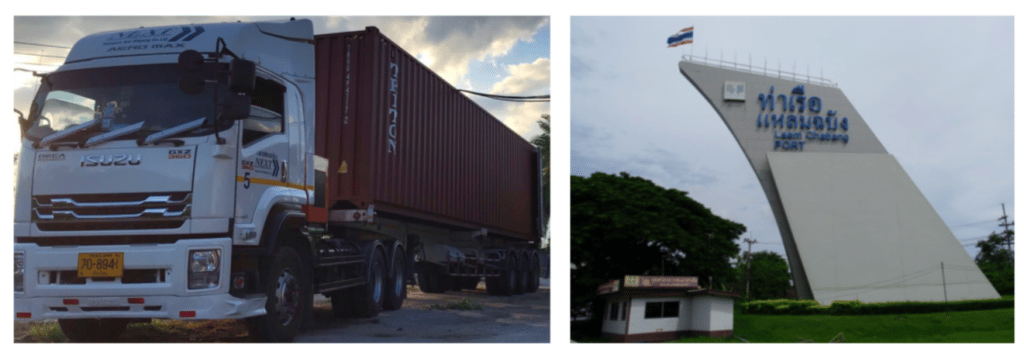The United States and Thailand have had a long historical relationship which includes mutually beneficial trade agreements. This is the reason why we’ve decided to show you why you should be considering sourcing from Thailand.
Scroll down to learn more!
Historical Trade Relations Between United States and Thailand

As we mentioned above, the United States and Thailand have a long history of trade relations. In fact, these go back to 1833, when the United States signed its first treaty with an Asian nation.
This treaty is known as the Treaty of Amity and Commerce (“Amity Treaty”).
It provides many benefits to US businesses and individuals seeking opportunities to trade and establish business relationships in Thailand .
There are also fantastic resources that are available to American businesses, such as the American Chamber of Commerce in Thailand (AMCHAM).
These resources include a wide range of business members that have done business in the country for decades and provide great insights into the opportunities that are available.
Sourcing from Thailand: Established US Brands
Large US brands such as Starbucks, Nike and Titleist have long established relationships in Thailand and serve as a point of reference on the possibilities for consumer goods.
Additionally, the United States remains one of Thailand’s largest export partners:
“The United States goods and services trade with Thailand totaled an estimated $52.7 billion in 2019. Exports were $16.7 billion and imports were $36.0 billion. In terms of goods only, Thailand is currently the United States’ 20th largest goods trading partner with $46.7 billion in total (two way) goods trade during 2019. Goods exports totaled $13.3 billion; goods imports totaled $33.4 billion.”
Office of the United States Trade Representative (USTR.gov)
Exporting and Geography of Thai Market
In spite of being the 15th largest country in Asia, Thailand still has a strong thriving economy and is a significant trading partner globally.
It is the United States’ 20th largest trading partner world wide and the European Union’s 26th largest trade partner.
Exports Focused
The Thai economy is import-export friendly and produces a large range of goods.
Historically, Thailand has been focused on producing electronic component parts, automobile components and other materials essential in the supply chain of technological goods.
Additionally, Thailand is also renowned for its wooden furniture, home décor, clothing, ceramics and food.
The Thailand 4.0 Initiative
This initiative aims to expand the country’s offerings to include more finished goods in all the categories and to embrace the ongoing ecommerce trends.
The government laid out initiatives that are very supportive of businesses.
Some of these focus on upcoming new lines of businesses and trends, thus opening up opportunities for global businesses looking to source for ecommerce platforms such as Amazon, Walmart or Wayfair.
Even today, there are thousands of Amazon listings selling products from Thailand such as:
- coconut juice
- cooking sauces
- wooden kitchenware
- rice
- dried fruits
- elephant pants
Bangkok and Chiang Mai

Bangkok
This city is undoubtedly the heart of Thailand and one of the significant metropolitan cities in the world.
It is also one of the most visited cities of the world, giving it a cosmopolitan charm.
Although tourism is its largest driver, the city serves as one of the larger sea ports in Southeast Asia. It also has the third largest seaport, called Laem Chabang, after ports in Singapore and Malaysia.
This has led to a strong ecosystem of:
- factories
- warehouses
- customs clearing houses
- markets
- offices and trucking services
Likewise, goods from all over Thailand can be found in Bangkok either in a production facility or in one of its many thriving markets.
Chiang Mai
This city is located in the north of Thailand and is close to the borders of both Laos and Myanmar. Chiang Mai’s climate is a little bit cooler than the rest of the country and very suitable for farming.
The region produces a large amount of food products such as coconuts, multiple varieties of rice, tea, coffee, mangoes and other tropical fruits.
Due to regional kaolin clay deposits, it’s also a huge producer of stoneware ceramics.
World class brands source a lot of their tableware from this region.
In addition, due to the numerous fruit orchards in Chiang Mai, wood products are also abundantly available and produced by both small workshops and large factories.
Export goods produced or sourced from Chiang Mai are transported to Bangkok via road or rail to be shipped out from the Laem Chabang Seaport.

Sourcing from Thailand: Challenges and Opportunities
Language
The local spoken language is Thai.
It is also the official business language and all documentation and contracts are typically in Thai.
It is important to point out that most Thai businesses have worked with foreign buyers, and they are able to produce sufficient export documentation in English, such as invoices and packing lists.
However, for complicated transactions or contracts, knowing Thai is very important.
In general, we have noticed that Vietnamese, Malaysian or Chinese sellers have a better grasp of English.
Local customs and etiquette
These important factors and many foreign buyers may not be familiar with them.
Thai businesses are respectful, polite and traditional in their dealings with other businesses.
Foreign buyers may not be aware of the local customs and this can be a challenge in establishing a long term relationship.
Connectivity
There is a lack of a platform to source easily.
Thailand does not have a mature website like Alibaba.com.
In order to source seamlessly, additional infrastructure needs to be linked in, such as:
- ecommerce friendly packaging
- logistics
- quality control
- marketing
- product photography
Very few companies in Thailand offer that full-service solution as of now. Individual smaller servicer providers are available but they need to be patched up to get everything as needed.
Production planning and ordering
Many times, suppliers encounter delays or have minor quality control issues.
This can lead to shortages in quantities acquired or delays in delivery.
We have noticed that Thai suppliers still trail a little in their timelines as compared to established factories in China. With adequate planning and establishment of strong relationships this can be reduced or overcome.
Tax laws and regulations
Thai tax laws for export can be challenging, but they can also be overcome.
Thailand uses a VAT system. In theory, exporting items waives a VAT charge, which can save a lot of money.
The paperwork is extensive however, and requires both a competent factory that can produce it, as well as a good tax accounting team.
For importers looking to scale up, understanding these requirements will save a lot of money in the long run. Purchasing from suppliers that are registered on the VAT system is important for long-term business growth.
Advantages to Sourcing from Thailand
The local currency is the Thailand Baht (THB)
Due to the global pandemic and associated impact to tourism, the Baht is at a multi-year low.
This trend is expected to continue as countries like the United States and Canada open up while South East Asia is still combatting the pandemic.
Labor is still relatively inexpensive
This means that a lot of your auxiliary supply chain expenses will be as cheap or cheaper than neighboring and nearby countries, including Malaysia and China.
Auxiliary expenses can include: marketing, packaging, quality control inspections, and in-country logistics expenses such as storage.
A great opportunity for large and small businesses
American small businesses are increasingly looking to diversify away from China.
This is due to increased trade costs and higher concentration risk from relying on only one source.
Large American Companies, such as Amazon have established a local presence.
Amazon Thailand is actively encouraging sourcing by US companies and providing its own incentives to help set up the supply chain.
The retail giant’s presence has led to a surge in interest in sourcing from not only Thailand, but other Southeast Asian economies as well.
Trade agreements with The United States
Given Thailand’s long standing trade agreements with The United States, import taxes are relatively low or non-existent on most products.
For example, a lot of food items and handicrafts have either low to no import duties.
There are a few developed supply chain solutions already in place, including:
- sourcing,
- logistics,
- marketing,
- and eCommerce preparation
The Advantages Outweigh the Challenges
Both small and mid-size sellers in the US should have some plans for diversification in their supply chains.
We have learned from recent closures due to the pandemic and trade negotiations that supply chains can get bottle-necked very quickly.
Reliance on single sources for factories is a risk that US sellers have to factor in.
Thailand can be the perfect option for this because it is a buyer-friendly and complementary marketplace for US businesses.
Existing trade treaties and strong US-Thailand relationships make it accessible for US based small businesses to source from suppliers in Thailand.
Thai suppliers are also well versed in trading with foreign buyers and looking for export opportunities.
The government’s recent incentives and focus are helping to facilitate trade and make it more attractive for eCommerce companies.
Closing Thoughts
Thinking ahead, Thailand is a very appealing sourcing point to consider. Platforms like Pankesum.com are helping sellers to make sourcing from Thailand easier.
For the past 5 years, Pankesum has worked on multiple sourcing projects for Amazon sellers.
They are in the process of implementing that experience into a seamless online platform to bridge the gap between the challenges and the benefits above.
Companies are increasingly diversifying their supply chains, and Southeast Asian economies are looking increasingly interesting to those aspiring to build upon their supply chains from China.
It’s very important to research your market size, sourcing, and marketing.
Taking the first step is always complicated, but will certainly pay off in the long run.
Authors

Abhi Deshpande – Co-founder at Pankesum

Jengis Gonzalez – Co-founder at Pankesum



